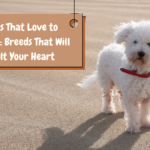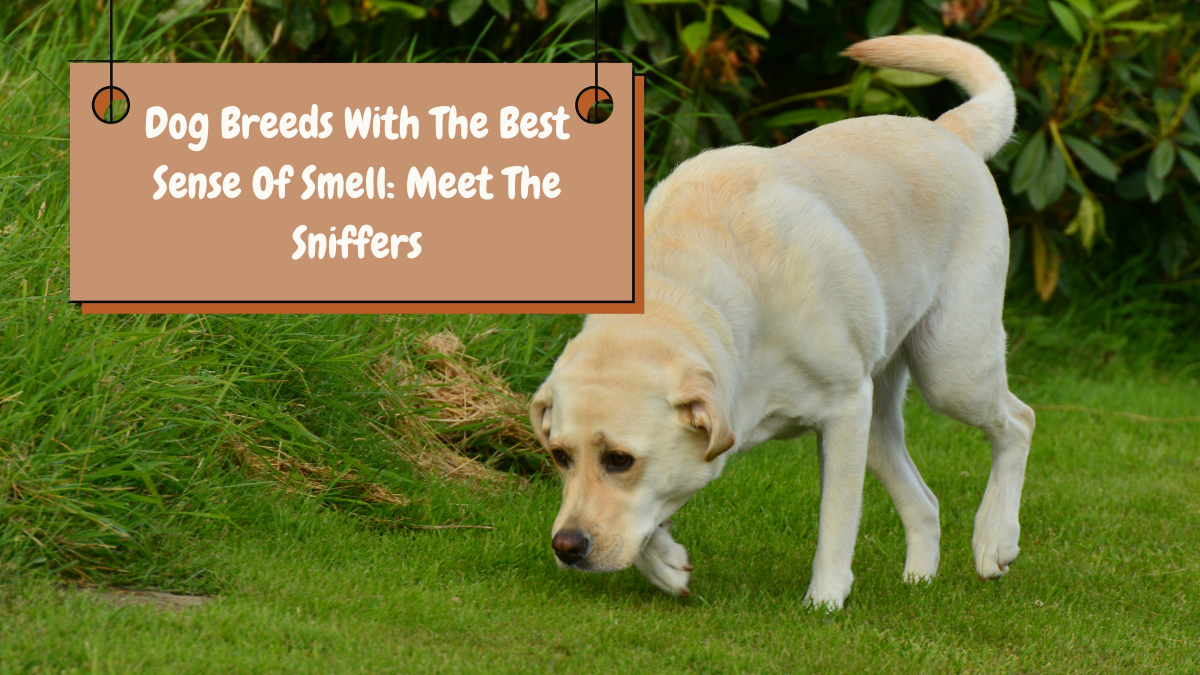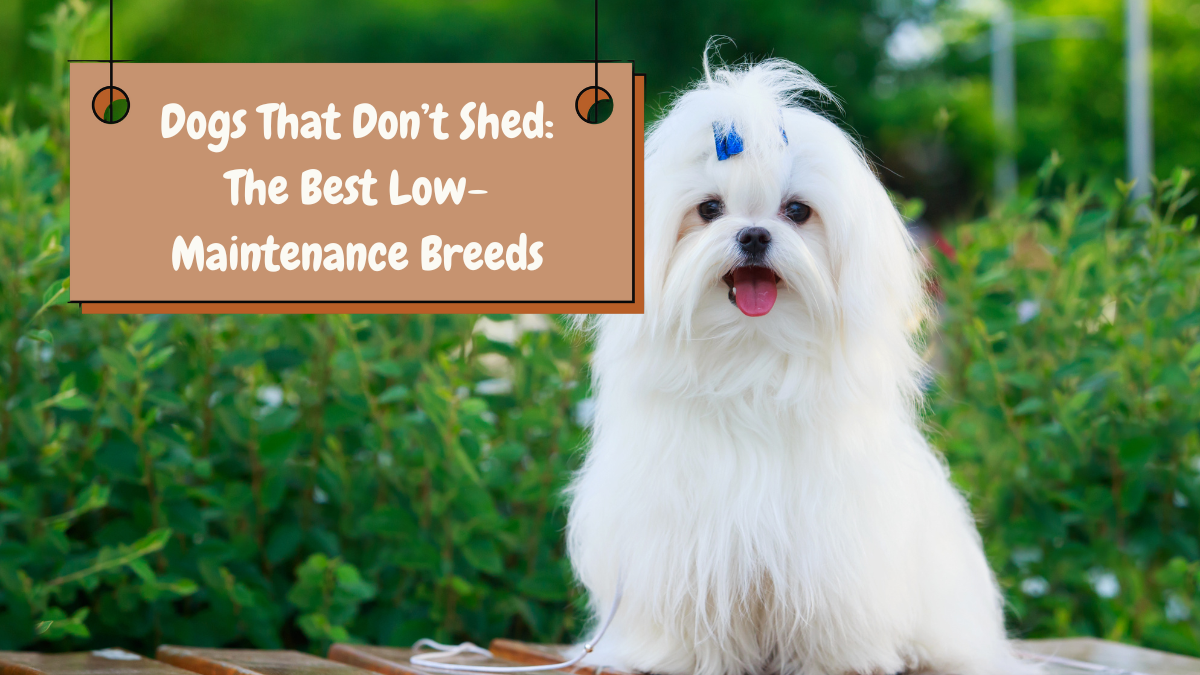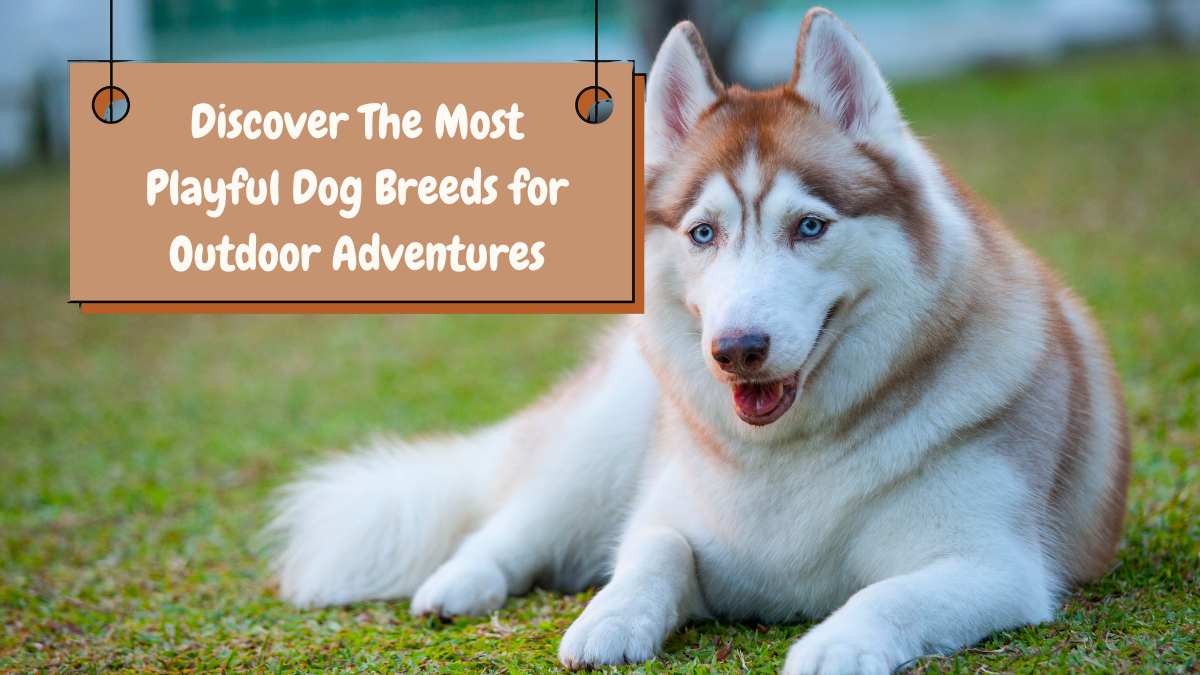Dogs have an extraordinary sense of smell, thanks to the structure of their noses and an impressive number of olfactory receptors. While all dogs have an excellent sense of smell compared to humans, certain breeds stand out for their sniffing abilities.
Whether it’s for hunting, tracking, or search and rescue, these dogs are known for their keen sense of smell. In this article, we will introduce you to the top dog breeds with the best noses, backed by scientific research and expert opinions.
The Anatomy of a Dog’s Nose
Dogs are equipped with over 300 million olfactory receptors, compared to only about 5 to 6 million in humans. These receptors allow them to detect smells at concentrations nearly 100,000 times lower than humans can.
A dog’s nose is not just for breathing; it has specialized airways that separate the air meant for breathing and the air used for smelling. This ability to separate the two functions makes their sense of smell incredibly efficient.
Furthermore, dogs have a second olfactory system known as the Jacobson’s organ, which is located at the roof of the mouth. This organ helps dogs detect pheromones, further enhancing their ability to process smells.
Top Dog Breeds with the Best Sense of Smell
1. Bloodhound
The Bloodhound is the ultimate sniffer. Known for its superior scent-tracking ability, the Bloodhound has been used for centuries in hunting, search and rescue, and even law enforcement. Their sense of smell is so accurate that their evidence is admissible in court.
- Olfactory receptors: Approximately 300 million.
- Special skill: Tracking human scent over long distances, sometimes even days old.
2. Basset Hound
Basset Hounds have long ears that sweep the ground, stirring up scents toward their nose. This breed is excellent for tracking scents over short distances and has been used historically to hunt rabbits and hare.
- Olfactory receptors: About 220 million.
- Special skill: Tracking small game over short distances.
3. Beagle
Beagles have one of the best noses among small breeds. Known for their work in airports detecting contraband, these dogs are diligent and focused when it comes to following a scent trail.
- Olfactory receptors: Around 225 million.
- Special skill: Detection work, including finding illegal substances.
4. German Shepherd
German Shepherds are often used in police and military roles, not just for their intelligence and strength, but for their excellent scent detection abilities. Their sense of smell is critical in search and rescue missions and detecting drugs and explosives.
- Olfactory receptors: Close to 225 million.
- Special skill: Search and rescue, detection of explosives and drugs.
5. Labrador Retriever
Labradors are widely used as detection dogs because of their intelligence, work ethic, and excellent sense of smell. Labradors are employed in a variety of fields, including detecting drugs, bombs, and even diseases like cancer.
- Olfactory receptors: About 220 million.
- Special skill: Detection work, including medical detection.
6. Coonhound
Coonhounds, particularly the Black and Tan Coonhound, are skilled trackers known for their ability to follow cold trails. They are used primarily in hunting raccoons and other game that leave faint scent trails.
- Olfactory receptors: Around 250 million.
- Special skill: Following cold trails over long distances.
7. Belgian Malinois
Another popular choice for military and police work, the Belgian Malinois is known for its intense drive and sharp nose. They are highly effective in detecting explosives, narcotics, and tracking suspects.
- Olfactory receptors: Close to 225 million.
- Special skill: High-energy tracking, detection, and security work.
8. Springer Spaniel
Springer Spaniels are famous for their work in detection roles, particularly in customs and airports. Their highly developed sense of smell allows them to detect even faint scents in luggage and cargo.
- Olfactory receptors: Around 220 million.
- Special skill: Detection work in customs and airports.
9. Pointer
Pointers are primarily used in hunting, and their keen sense of smell helps them locate game from great distances. Their instinct to point out game to hunters is one of their standout traits.
- Olfactory receptors: About 210 million.
- Special skill: Scenting game from a distance and pointing.
10. Dachshund
Don’t let their small size fool you—Dachshunds have a powerful sense of smell, which is why they were originally bred for hunting badgers and other burrowing animals. Their persistence in following a scent makes them excellent trackers.
- Olfactory receptors: Around 220 million.
- Special skill: Hunting small animals like badgers.
| Breed | Olfactory Receptors | Special Skill |
|---|---|---|
| Bloodhound | 300 million | Tracking human scent over long distances |
| Basset Hound | 220 million | Tracking small game |
| Beagle | 225 million | Detection work, contraband detection |
| German Shepherd | 225 million | Search and rescue, detection of drugs and bombs |
| Labrador Retriever | 220 million | Detection work, medical detection |
| Coonhound | 250 million | Following cold trails |
| Belgian Malinois | 225 million | Detection, security work |
| Springer Spaniel | 220 million | Detection in customs |
| Pointer | 210 million | Scenting game from a distance |
| Dachshund | 220 million | Hunting small animals |
How Do Dogs Use Their Sense of Smell?
Dogs use their noses for more than just sniffing out food. Their sense of smell helps them navigate their world, identify people and animals, and even detect emotions. Dogs can sniff out fear, anxiety, and other emotions based on the chemical changes that occur in humans. They can also use their noses to find lost individuals, detect medical issues, and even locate historical artifacts.
Conclusion
Dogs with strong senses of smell are invaluable companions in various fields, from law enforcement to search and rescue. Breeds like Bloodhounds and Beagles have been serving humans for centuries, using their noses to track scents and save lives.
Whether you’re looking for a working dog or simply a companion with a keen sense of smell, these breeds are sure to impress. Their remarkable abilities make them some of the most fascinating animals on the planet.
FAQs
1. Which dog breed has the best sense of smell?
The Bloodhound is widely considered the best breed for scent tracking, thanks to its 300 million olfactory receptors.
2. How do dogs compare to humans in terms of smell?
Dogs have about 50 times more scent receptors than humans, allowing them to detect smells that humans cannot perceive.
3. What are some common uses for dogs with a strong sense of smell?
Dogs with strong senses of smell are used in search and rescue, hunting, police and military roles, and medical detection.
4. Can all dogs be trained to track scents?
While all dogs have a good sense of smell, certain breeds like Bloodhounds and Beagles excel in scent tracking and detection work.
5. What are the factors that contribute to a dog’s strong sense of smell?
The number of olfactory receptors, the specialized airways in their noses, and the presence of the Jacobson’s organ all contribute to a dog’s superior smelling abilities.











